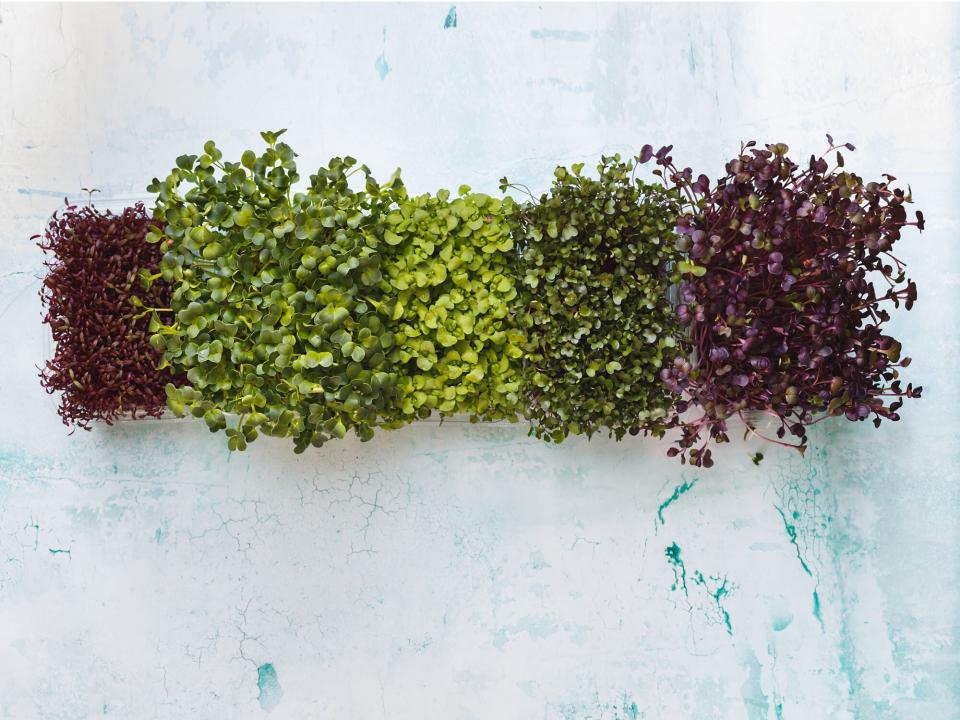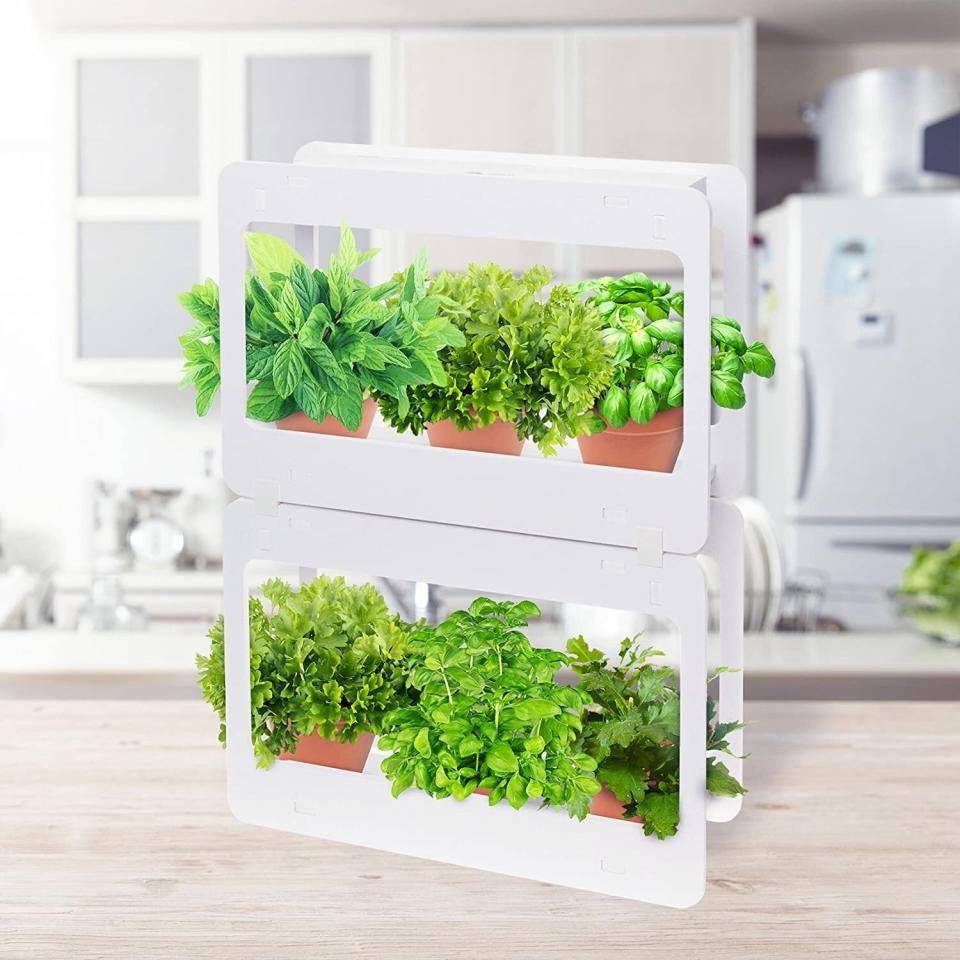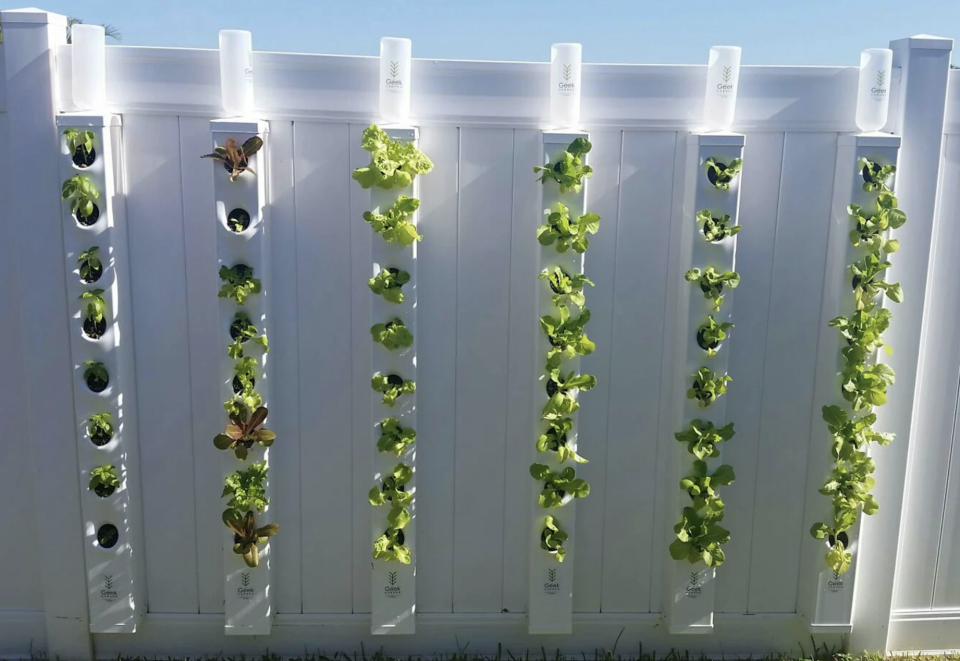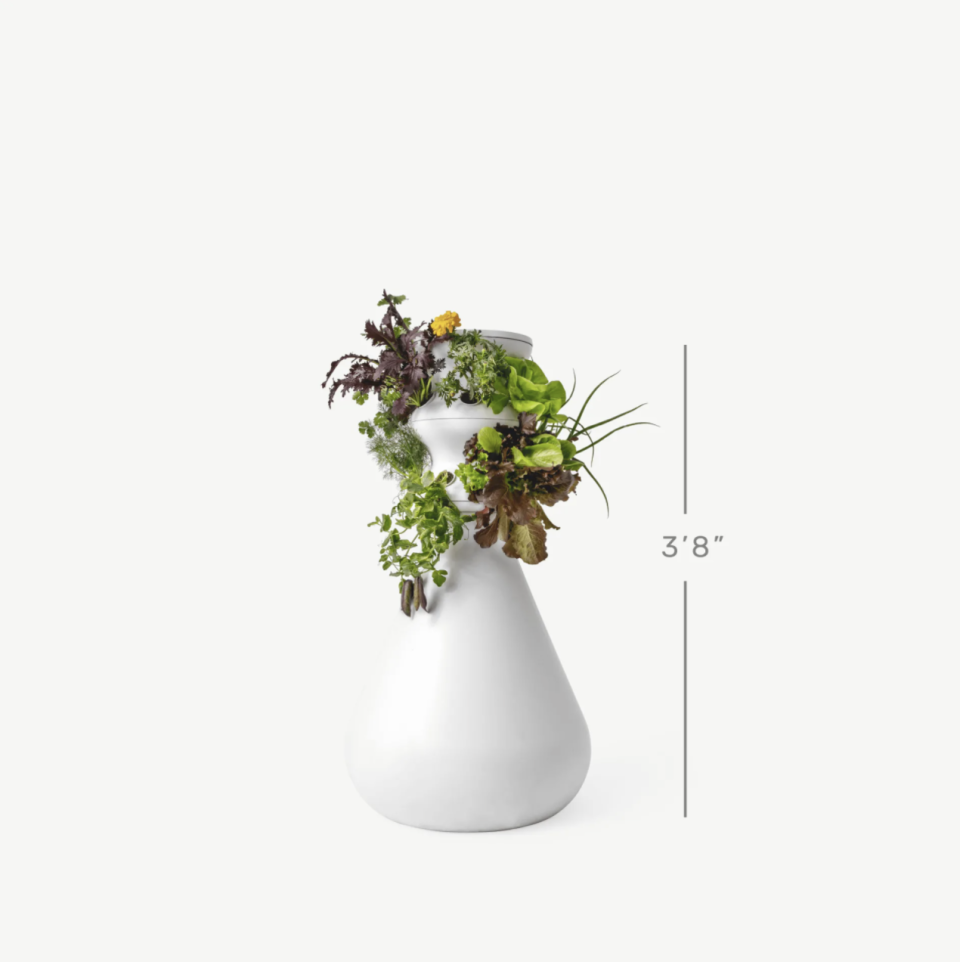Vertical Farming Is a Space-Saving Way to Grow Fruits and Vegetables at Home—Here's How
If you've ever wanted to grow fruits and vegetables in your small yard or kitchen but simply lack the space to do it, you might want to give vertical farming (sometimes called vertical gardening) a try. As the farming method's name implies, it's all about planting things—greens, herbs, fruit, and the like—layered on a vertical surface instead of spread out on a horizontal one. Since everything is oriented vertically, this farming tactic is often better suited for urban areas, as well as homes or businesses that don't have a large, flat plot of land. It can be done on large-scale farms (typically indoors), as well as in your own home, provided you have the necessary equipment.

Getty Images
The use of stacked layers in vertical farming (picture a wall of greens instead of a floor covered with 'em) allows farmers and even at-home gardeners to produce more food on the same amount of land. In fact, since decades of traditional farming has significantly damaged the soil in some locations, farmers and others are integrating these vertical layers into buildings (including skyscrapers, warehouses, and even shipping containers) as well as other spaces that would be otherwise unfit for farming.
RELATED: These Are the 7 Easiest Fruits and Vegetables to Grow
Vertical farming can work in a myriad of ways, but one of the simplest forms (and one that is great for an at-home vertical farm of your own) involves crops that are grown inside stacked plant cups or trays that are then nestled in tower-like structures. The towers are equipped with hydroponic systems that are engineered to produce the perfect micro-climate, which controls everything, including temperature, light exposure, and moisture level.
In many cases, crops are actually grown soil-less, within a continuously circulating nutrient-rich water, instead. This is often why vertical farming systems are used to grow a variety of crops year-round.
Is Vertical Farming Sustainable?
One of the biggest selling points of vertical farming (and why it has increased in popularity in recent years) is that it is significantly more sustainable than traditional farming methods. First and foremost, vertical farming requires less water and space than its more traditional counterparts. It's estimated that farmers can use 98 percent less water and 99 percent less land with vertical farming methods. They can also produce crop yields that are 240 times that of traditional farms, since (indoor) vertical farming allows for a year-round, rolling harvest. And if you opt to grow some of your fruits and vegetables at home instead of venturing to the store to buy them, you're reducing your own carbon footprint.
RELATED: How to Reduce Food Waste in Your Home, According to One of the World's Top Experts
Since indoor vertical farming isn't dependent on weather or climate the way traditional farming is, it allows for increased production overall, as well as consistent production all year-round. This means there's no more need to worry about when (or even if) certain crops will be in season. Food shortages? Never heard of 'em. For at-home vertical green thumbs, this means you can plant broccoli in the dead of winter as well as spinach well into the spring and summer.
According to Grand View Research—a California-based market research and consulting company—the COVID-19 pandemic has contributed to an increase in the demand for vertically grown produce because the crops in vertical farms are grown and harvested with less human exposure. Additionally, since safety and freshness are associated with vertically grown crops, consumers have been increasingly drawn to them. Grand View also projects that the vertical farming industry is expected to see continued growth, and will bring in an estimated revenue of $6.46 billion in 2027.
What Can You Grow With Vertical Farming?
Or should we say, what can't you grow with vertical farming? Vertical farms and gardens tend to have superior sun/light and oxygen exposure than horizontal arrangements, and since height is obviously a factor when you're talking about verticality, these gardens are typically better protected from pests, such as caterpillars, slugs, and beetles. This is especially true if you opt to place your garden inside.
RELATED: 10 Mistakes You're Making When Growing Your Own Food
Foods that can thrive in a vertical garden include tomatoes, peas, cucumber, zucchini, squash, kiwis, green beans, leafy greens (including kale, bok choy, spinach, and radicchio), corn, chilies, and Brussels sprouts. Other vertical garden dwellers include eggplant, bell peppers, strawberries, cauliflower, and celery, as well as an array of herbs.
Just keep in mind that while fruits like melons can be grown vertically, they are obviously larger and heavier so you need to make sure you have adequate support in place before you give them a try.
Interested in Vertical Farming at Home? Try These Kits
While at-home vertical farms and gardens are obviously much smaller than those that occupy shipping containers or skyscrapers, they're still a great way to grow fruits and vegetables on your own year round. Plus, most at-home kits are equipped with special temperature, light, water settings, so it's virtually impossible to mess your produce up. Check out the following kits that are ideal for at-home use!
A Stackable Indoor Garden
If you think you're ready to dip your toe in the vertical farming pond, this is a great place to start. This stackable kit is designed for herbs and vegetables (but also works well for flowers and succulents) because it features 14 automatic LED lights that simulate sunlight. You can even start with whatever seeds you want. Just note that you will need to water these plants or place them in self-watering pots.

An Indoor or Outdoor Hydroponic Unit
This vertical garden works well indoors or outdoors and is ideal if you're looking to grow leafy greens, herbs, melons, and berries. It's equipped with four layers, has spots for 56 plants, and doesn't require any soil. It also has a water pump equipped with a timer so your growing plants will always have just the right amount of H20.

A Fence Farm
This versatile Etsy product helps you turn your own fence into a vertical farm that can grow kale, tomatoes, and more. Each column, which can be tethered to just about any vertical surface, sports eight separate plant sites and is retrofitted so it can be used to recirculate hydroponics. Just note that you will need your own reservoir and water pump.

A Self-Watering Farmstand
For the full vertical farming experience, Lettuce Grow's popular Farmstand is probably your best bet. The tower is on the expensive side, but it's self-fertilizing and self-watering, which means you barely need to lift a finger to get some fresh, homegrown fruits and vegetables. It comes with its own water pump, grow cups, and timer, and also includes a pH testing kit so you can monitor the health of the water each week and adjust it as needed.
While The Farmstand doesn't come with seeds, Lettuce Grow separately sells more than 200 varieties of pre-sprouted seedlings so you can use your new stand to grow strawberries, eggplant, cucumbers, and more. And if you plan to keep your Farmstand inside, you can also purchase special Lettuce Grow Glow Rings to keep your plants in tip-top shape.


 Yahoo Finance
Yahoo Finance 